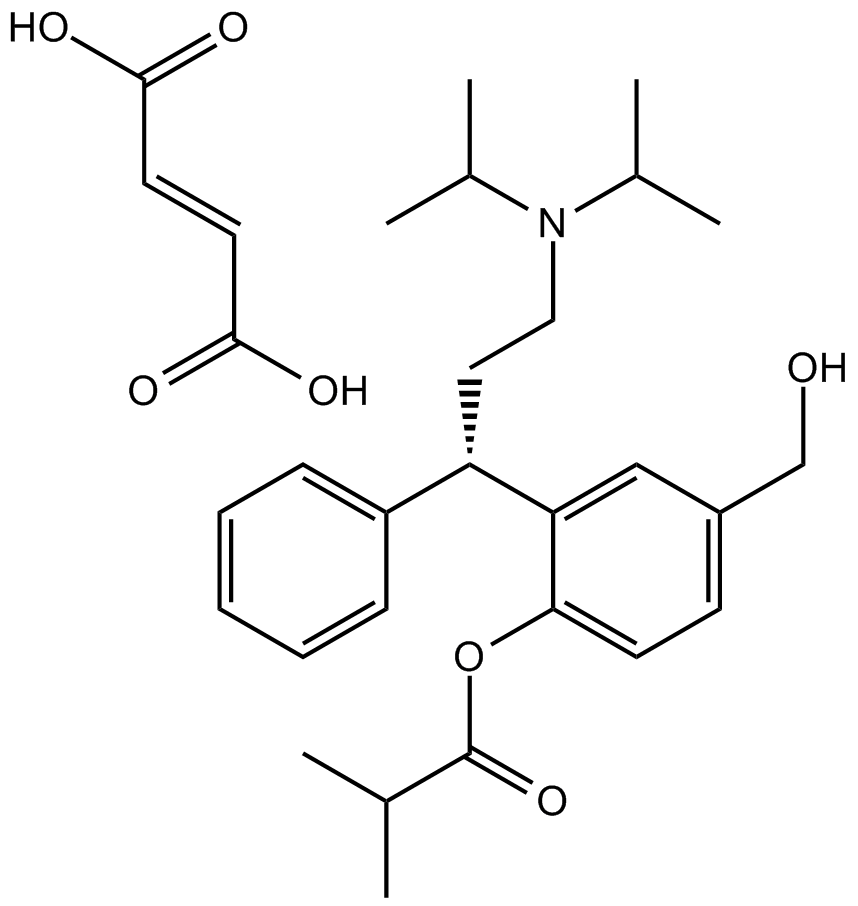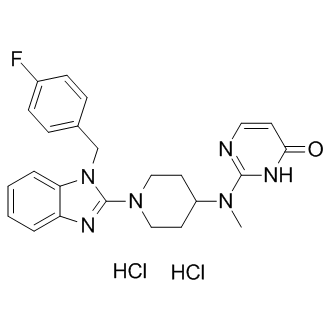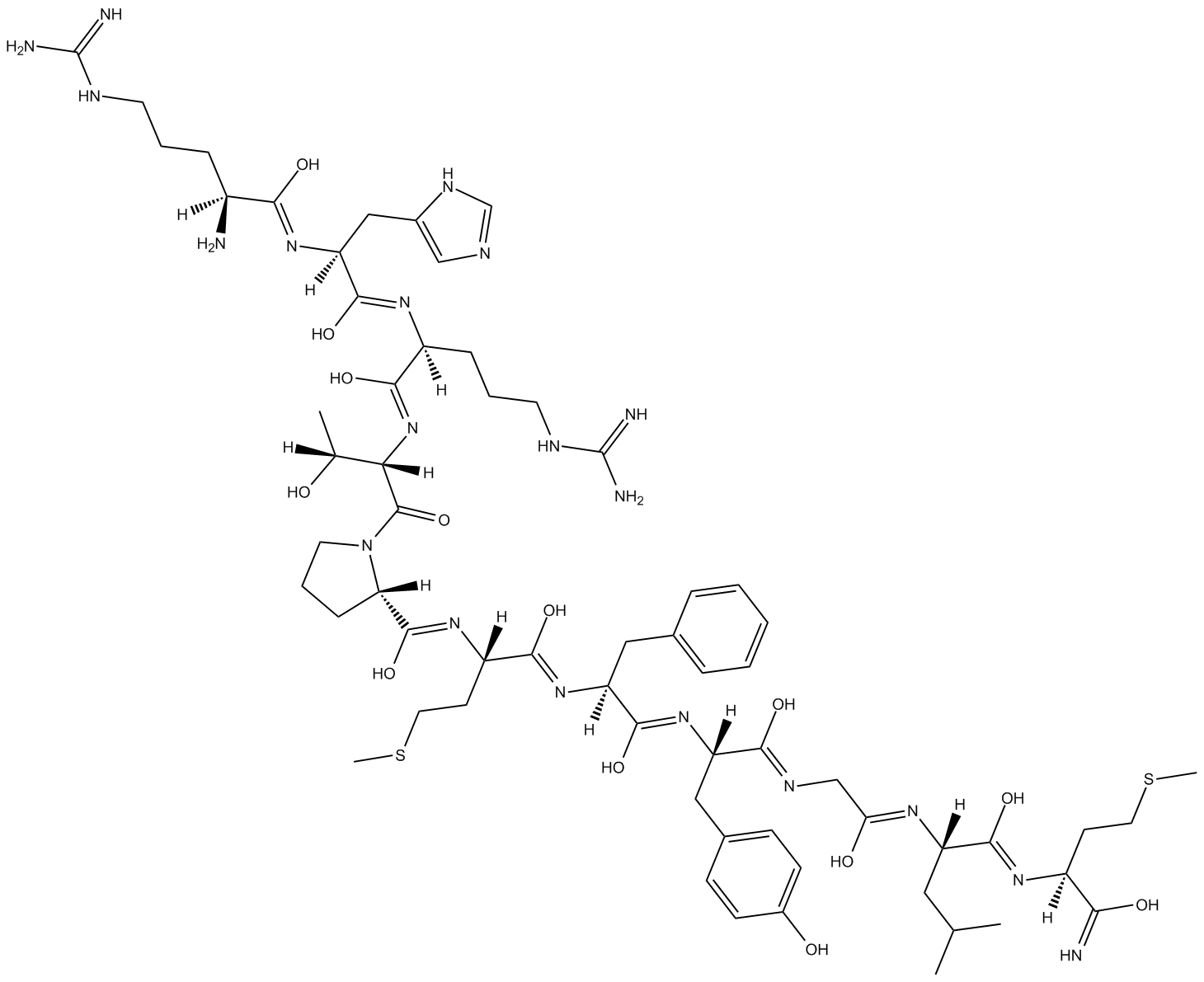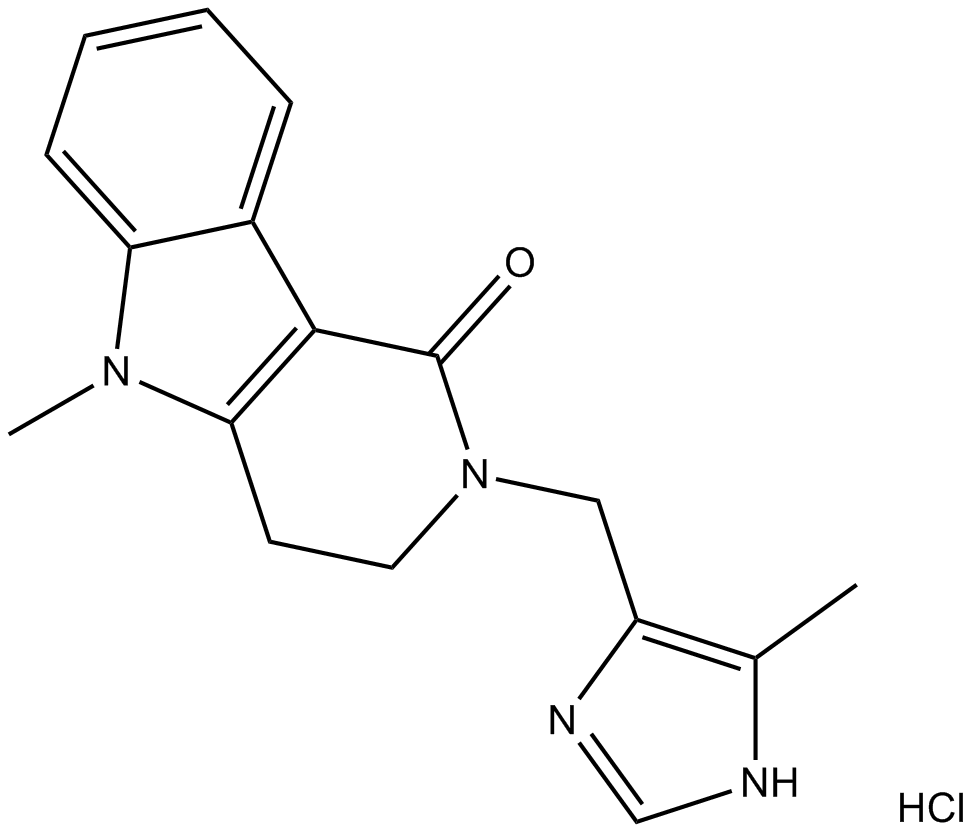Neuroscience

Neurotransmitter receptors function via various G-protein coupled and G-protein independent mechanisms that activate downstream intracellular signaling pathways such as cAMP/PKA, PI3K/AKT, phospholipase A2, and phospholipase C pathways. For instance, dopamine receptors act through adenylate cyclase to activate PKA and other signaling molecules, thereby mediate gene expression through the actions of CREB and other transcription factors. Other neurotransmitters such as NMDAR or AMPAR are associated with ion channels that control flux of Ca2+ and Na+, thus propagating the action potential across the post-synaptic neuron.
Dysfunctions in GABAergic/glutamatergic/serotonergic/dopaminergic pathways result in a broad range of neurological disorders such as chronic pain, neurodegenerative diseases, and insomnia, as well as mental disorders including schizophrenia, bipolar disorder, depression, and addiction.
-
 B1102 BrexpiprazoleSummary: 5-HT2A, α1B-, and α2C-adrenergic receptors antagonist
B1102 BrexpiprazoleSummary: 5-HT2A, α1B-, and α2C-adrenergic receptors antagonist -
 B1531 (R)-baclofenTarget: GABAB ReceptorsSummary: GABA receptor agonist
B1531 (R)-baclofenTarget: GABAB ReceptorsSummary: GABA receptor agonist -
 B1618 Fesoterodine FumarateSummary: Muscarinic AChR receptor antagonist
B1618 Fesoterodine FumarateSummary: Muscarinic AChR receptor antagonist -
 B1116 Mizolastine dihydrochlorideSummary: Histamine H1-receptor antagonist
B1116 Mizolastine dihydrochlorideSummary: Histamine H1-receptor antagonist -
 B2247 IEM 1754 dihydrobroMideSummary: selective AMPA/kainate receptor blockers for GluR1 and GluR3
B2247 IEM 1754 dihydrobroMideSummary: selective AMPA/kainate receptor blockers for GluR1 and GluR3 -
 B5240 C14TKL-1Summary: potent agonist for NK1 receptors
B5240 C14TKL-1Summary: potent agonist for NK1 receptors -
 B5332 CatestatinSummary: Non-competitive nicotinic cholinergic antagonist
B5332 CatestatinSummary: Non-competitive nicotinic cholinergic antagonist -
 B6286 Ambenonium dichlorideSummary: AChE inhibitor
B6286 Ambenonium dichlorideSummary: AChE inhibitor -
 A3159 Alosetron HydrochlorideSummary: 5-HT3 receptor antagonist,potent and highly selective
A3159 Alosetron HydrochlorideSummary: 5-HT3 receptor antagonist,potent and highly selective -
 A5220 Vecuronium BromideTarget: AChRSummary: Nonpolarizing neuromuscular relaxant
A5220 Vecuronium BromideTarget: AChRSummary: Nonpolarizing neuromuscular relaxant

